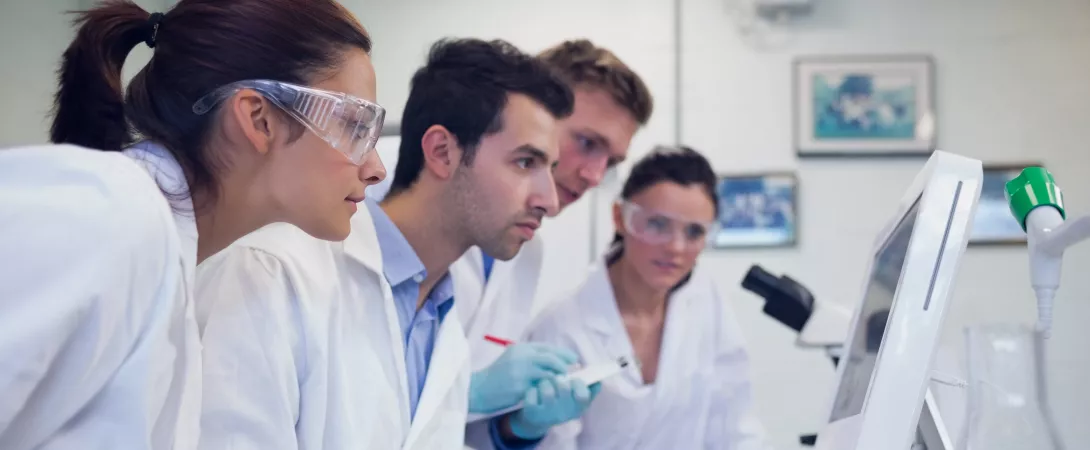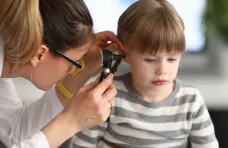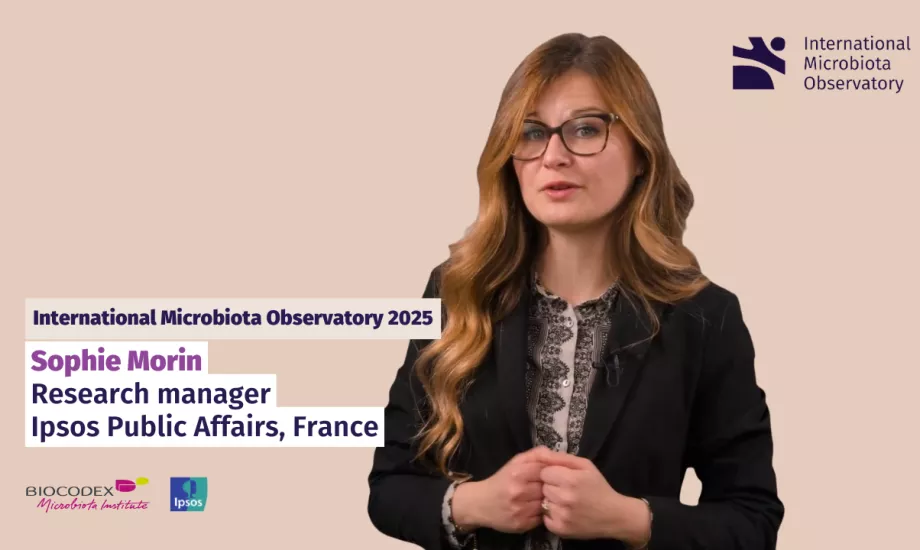2025 results: The International Microbiota Observatory 3rd edition
For the 3nd year running, the Biocodex Microbiota Institute has commissioned Ipsos to carry out a major international survey among 7,500 people in 11 countries. The challenge is to better understand people’s knowledge and behavior towards their microbiota.
From awareness to action: this year's results reveal that microbiota knowledge has improved worldwide, and everyone can take action to raise awareness and adopt better behaviors.
- 1. Microbiota: knowledge on the rise, “good” behavior lagging
- 2. Microbiota basics: is there a generational divide?
- 3. Microbiota awareness starts with healthcare professionals
- 4. A strong interest in microbiome testing, particularly gut analysis
- 5. Antibiotics' negative impacts on microbiota could be better explained
- Scientific committee
- Methodology
1. Microbiota: knowledge on the rise, “good” behavior lagging behind
The 2025 results of the study show a first paradox: knowledge of health issues linked to microbiota is still growing, but the number of people taking action is not increasing, and has remained stable this year. In many cases, the majority of the public is still unaware of what they need to do to keep their microbiota in balance.
How much do people know about the microbiota?
The public is increasingly aware of the existence of different microbiota in the human body. But they still don't understand the importance of maintaining a balanced microbiota for good health.
7 in 10 of those surveyed have already heard of the term "microbiota"...
(+8 points vs. 2023)
But only 1 in 5 of those surveyed claimed to know exactly what the term "microbiota" meant.
(+4 points vs. 2023)
Only 1 in 3 people had ever heard of the term dysbiosis (another word for microbiota imbalance).
(No evolution since 2023)
Good to know
To promote good health, the microbiota must maintain a certain balance among the different microorganisms that compose it (such as bacteria, fungi, yeasts, etc.). Any imbalance is referred to as dysbiosis.
how well do we know it?
Only 28% of those surveyed said they knew exactly what the gut microbiota is.
+4 points vs. 2023
Learn more about the gut microbiota...
Only 21% of those surveyed said they knew exactly what the vaginal microbiota is.
+3 points vs. 2023
Learn more about the vaginal microbiota...
Only 20% of those surveyed said they knew exactly what the oral microbiota is.
+3 points vs. 2023
Learn more about the oral microbiota...
Only 17% of those surveyed said they knew exactly what the skin microbiota is.
+1 point vs. 2023
Learn more about the skin microbiota...
Only 16% of those surveyed said they knew exactly what the urinary microbiota is.
+2 point vs. 2023
Learn more about the urinary microbiota...
Only 14% of those surveyed said they knew exactly what the lung microbiota is.
+1 point vs. 2023
Learn more about the lung microbiota...
Only 32% of those surveyed had ever heard of the term dysbiosis (a microbiota imbalance).
+3 points vs. 2023
Learn more about dysbiosis...
Do people adopt healthy habits that support their microbiota?
While behaviors commonly accepted as good for health (and good for the microbiota) are more easily acquired, certain habits more specific to maintaining the balance of the microbiota don't yet seem to be in place.
Over half of the people surveyed claim to have already changed their behavior to protect the balance and proper functioning of their microbiota.
(-1 point vs. 2024)
1 in 3 said they have "not really" changed their behavior.
(No evolution since 2024)
A minority of people said they haven't changed at all.
(+1 point vs. 2024)

A large majority say they eat a balanced and varied diet (83%) to avoid an unbalanced microbiota.

About 3 in 4 people surveyed said they engage in physical activity (78%) and avoid smoking (77%) to limit the risk of microbiota imbalance.

About half of the respondents claim to consume probiotics (50%), and fewer people take prebiotics (40%) for their microbiota.
Do people unknowingly adopt habits that disrupt their microbiota?
48% say they wash their bodies several times a day, a practice likely to cause dysbiosis, and 42% of women take vaginal showers, even though this is harmful to their vaginal microbiota.

How to keep a healthy microbiota?
Learn more
2. Microbiota basics: is there a generational divide?
Parenthood is a gateway to knowledge about microbiota. On the other hand — and this is a 2nd paradox — senior citizens, despite being the most at-risk population, remain the least well educated.
of parents (with children under 3 years old) have already heard of the term “microbiota”.
(+7 points vs. 2024)
of the overall population has already heard of the term “microbiota”.
(+8 points vs. 2023)
of seniors 1 have already heard of the term “microbiota”.
(+2 points vs. 2024)
1 Disclaimer: in these results, seniors are represented by the population aged 60 and over.
A link between parenthood and microbiota awareness
The third edition of the Observatory reinforces previous findings: parenthood is indeed a “golden age” for microbiota knowledge. Logically, monitoring a child's overall health exposes parents, more than any other population, to fundamental questions and microbiota-related health issues.

1 in 2 parents of young children have already heard about the term ‘dysbiosis’ (vs 33% of the general population). For many, the first time they heard about the microbiome was at school or during their studies.
How well do seniors know about the microbiota?
One would think that older populations might be the most informed on microbiota matters, since they tend to have developed more health conditions and see the doctor more often. However, this year's survey data confirms that seniors have even more to benefit from awareness campaigns.
Only 63% of seniors have heard about microbiome (vs 71% of the overall population), with 12% of them having first heard about it on TV! A similar trend happens with dysbiosis: only 1 in 4 seniors recognizing the term in comparison to 1 in 3 of the overall population.

What is your best advice for aging well?
Find out more...
3. Microbiota awareness starts with healthcare professionals
Recognized as trusted partners, healthcare professionals appear to be the most effective drivers of behavior change.
of people said HCPs are the most trusted source of information on the microbiota.
(+3 points vs. 2024)
of survey respondents have received information about the microbiota from a healthcare professional at least once.
(+7 points vs. 2024)
of people surveyed said they heard about the microbiota for the first time through a healthcare professional
(+1 point vs. 2024)
When it comes to which type 2 of healthcare professional is giving explanations on the microbiota to patients, some stand out:
- The family physician was cited by 51% of people as having shared information on the microbiota
- 1 in 3 of respondents said they received explanations (probably about the gut) from their gastroenterologist
- 18% people mentioned the gynecologist (in this case, likely due to the vaginal microbiota)
- Even pharmacists and nurses appeared on the survey, with about 15% each.
² The results are multiple choice, which means the same person could have received explanations from the family physician and a pharmacist

“Awareness about the microbiota is just the beginning. Taking action to preserve its balance is the following step. This year, the Biocodex Microbiota Institute has taken a step further by turning data into action. In partnership with Le French Gut, we’re translating knowledge into public engagement — empowering citizens, researchers, and healthcare professionals to work hand-in-hand for better health.”
Beyond the local medical sphere
In some countries, the survey highlights the emergence of other levers for learning about the microbiota.
where do people learn about microbiota?
12% of the overall population have first heard about the microbiota at school or in their studies.
This figure rises to 19% in Brazil and Vietnam.
10% of the overall population have first heard about the microbiota on TV.
This figure rises to 17% in Italy and 16% in France.
5% of the overall population have first heard about the microbiota on social media.
This figure rises to 12% in China and 8% in Brazil.
5% of the overall population have first heard about the microbiota through friends & family.
This figure rises to 8% in France.

4. A strong interest in microbiome testing, particularly gut analysis
There has been a growing interest in gut health, accompanied by legitimate scientific advances in microbiota research. The third edition of the survey confirms it: people are willing to undergo microbiota testing. Healthcare professionals may also request such tests for certain patients.
What is microbiota testing and mapping?
There are different types of microbiota testing, not only for the gut. Overall, they seek to identify microorganisms, such as bacteria and fungi, living in a specific part of the body to help inform health decisions and/or outcomes.
Intestinal microbiota testing, which seems to be the most common type of analysis, generally tests a person’s stool sample. For example, they could look for illness markers or extract DNA.
Both collective and individual gut microbiota analyses start with a stool sample. Microbiota mapping aggregates results from multiple microbiota tests to advance research and fight chronic diseases. Individual tests provide personal data on gut flora, with no definition of a clinically validated “healthy” or “pathological” microbiota. Thus, mapping fuels population-level knowledge, while testing gives a snapshot of one’s own microbiota.
1 out of 5 surveyed people have already heard of testing their microbiome.
3 out of 5 surveyed people would be ready to donate their stool in order to test their microbiota.
What populations are most aware of microbiome testing?
The 2025 survey revealed that microbiome testing awareness varies greatly by demographic and region. Young parents show the highest familiarity, with 40% having heard of it, compared to just 18% of seniors. Regionally, awareness is much higher in Asia, where 58% of respondents are familiar with microbiome testing, while Europe lags behind at only 18%.
Why would people give away their microbiota stool?
- 6 out of 10 surveyed people would test their microbiota to conduct a general health checkup (60%). On the other hand, 23% would do it out of curiosity.
- Only 2 out of 10 surveyed people would test their microbiota to help balance their microbiota (53%), or to prevent or slow down pathologies (51%).
- 3 out of 10 surveyed people would test their microbiota to help microbiota science to progress (31%).

5. Antibiotics' negative impacts on microbiota could be better explained
Although healthcare professionals are increasingly discussing the microbiota, the survey shows that many people remain unaware of how antibiotics can disrupt its balance.
of surveyed people claim to know that antibiotics impact the microbiome.
(+4 points vs. 2023)
Only 1 in 3 people had been informed by a healthcare professional that taking antibiotics could have negative consequences on the balance of their microbiota.
(+2 points vs. 2023)
of people being prescribed antibiotics were told about digestive disorders associated with them.
(+2 points vs. 2023)

Antibiotics: their effects on microbiota and our health?
Find out more...Only a quarter of people have received key information about the microbiome after being prescribed antibiotics, despite the impact antibiotics have on it. When it comes to the protective role of probiotics and prebiotics, about 1 in 2 people know exactly what probiotics are — but only 1 in 3 can say the same for prebiotics.
What’s more, it remains rare for patients to be prescribed both antibiotics and probiotics — a sign of a significant gap in prevention and health education.

What is the difference between prebiotics, probiotics and postbiotics?
Learn moreSophie Morin, Research Manager Ipsos Public Affairs France, comments on 2025 results

Scientific committee
In 2024, a multidisciplinary international scientific committee was set up to:
- oversee the 2024 survey’s editorial process (made by Ipsos)
- give a critical analysis about the 2024’s survey & results in his field (gastroenterology, gynecology, diet…) in a scientific article, interview or other publication that could be shared on the Institute’s website and available in 7 languages
- promote and support the International Microbiota Observatory’s roll out on a national level among colleagues, physicians, patients, medical societies…
This scientific committee is made up of:

Hanna Stolińska-Fiedorowicz, PhD
Poland
Clinical dietician, lecturer, graduated from the Medical University of Warsaw.
She worked at the Institute of Food and Nutrition for 7 years.
Check her Linkedin profile here.

Joël Doré, PhD
France
Research Director at INRA & Scientific Director of the MetaGenoPolis.
Check his Linkedin profile here.

Purna C. Kashyap, M.B.B.S.
USA
Gastroenterologist, Mayo Clinic College of Medicine.
Check his Linkedin profile here.

Jean-Marc Bohbot, MD, PhD
France
Andrologist, infectious disease specialist, Institut Alfred Fournier.
Check his Linkedin profile here.
Methodology (TO UPDATE)
This third edition of the International Microbiota Observatory was conducted by Ipsos on 7,500 individuals across 11 countries (France, Portugal, Poland, Finland, Italy, Germany, the USA, Brazil, Mexico, China, and Vietnam). Two new countries were included in this edition: Italy and Germany.
The survey was conducted over the Internet between January 21 and February 28, 2025. For each country, the sample is representative of the population aged 18 and over in terms of :
- gender
- age
- profession
- region
Representativeness was ensured via quota sampling, the most commonly used sampling method for obtaining a representative sample of the population studied. The quota variables for each country were gender, age, region, and socio-professional category. The data were adjusted:
- within each country, again to ensure that each population is representative
- globally, so that each country has the same weight. Statistical analyses were carried out using Cosi software (M.L.I., France, 1994), with a significance level of 95%
The survey population was 48% male and 52% female. The average age was 47.3 years. The sample of 7,500 individuals made it possible to carry out a detailed analysis by age group:
- 18-24
- 25-34
- 35-44
- 45-59
- 60 and over
Changes from one year to the next have been measured on a like-for-like basis, i.e. calculated taking into account only those countries present in both the first and second editions of the survey. While we do have results for the new countries included in this third edition (Germany and Italy), they have not been taken into account when calculating trends, since they were not included in the first two editions of the survey.
The questionnaire includes 16 questions on:
- socio-demographic data
- the level of knowledge about microbiomes
- the level of and desire for information from healthcare professionals
- the identification and adoption of behaviors designed to combat microbiome imbalances
- the level of knowledge, information, and behaviors of women about the vulvo-vaginal microbiome
- health data
The questionnaire lasted ten minutes and the 7,500 individuals had to complete the entire questionnaire in order to be included in the survey. The terms used in the questionnaire to talk about the microbiome have been translated and adapted to the terms used in each country.




